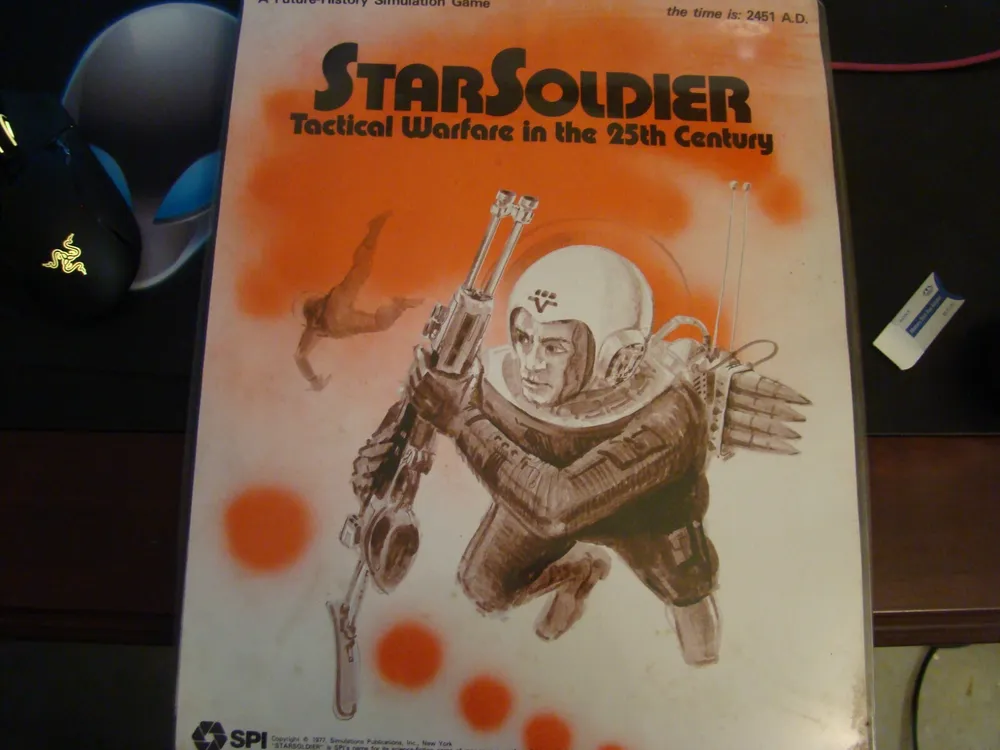StarSoldier: Tactical Warfare in the 25th Century (1977)
StarSoldier
StarSoldier is a 2-player board game in which one player controls invading aliens, and the other controls StarSoldiers defending the planet. It was designed by Tom Walczyk, with artwork by Redmond A. Simonsen, and published by SPI in 1977. StarSoldier was created as a spin-off of the popular science fiction game StarForce: Alpha Centauri, which was published by SPI in 1974.
Why is StarSoldier Popular?
StarSoldier is considered an innovative game in the science fiction genre. It was well-received by gamers and sold well, staying on SPI’s Top Ten Bestseller list for four years. The game is significant for its tactical level simulation of combat between a small number of StarSoldiers, powerful future warriors.
Game Components of StarSoldier: Tactical Warfare in the 25th Century
How To Setup StarSoldier: Tactical Warfare in the 25th Century
Setup involves placing the game board, distributing counters to players, and initializing each StarSoldier’s task point allowance, efficiency rating, and recovery rate. Players must also select a scenario or create a custom setup. The game includes detailed rules for setup, but the process can be somewhat complex due to the plethora of rules and values involved.
Gameplay Mechanics and Game Objective
Player Experience
Playing **StarSoldier** can be a mixed bag. The game is praised for its elegant mechanics, particularly in how it distinguishes between different species through task point allowances, efficiency ratings, and recovery rates. However, the game’s presentation is quite plain, and the tracking of task points can become cumbersome, especially in larger battles. Despite these issues, the game offers a unique and engaging experience, especially for those who appreciate tactical wargaming.
Pros
Cons
Personal Thoughts on StarSoldier: Tactical Warfare in the 25th Century
**StarSoldier** is best suited for fans of tactical wargaming and science fiction who are willing to invest time in understanding and managing the game’s complex mechanics. While it may not appeal to those seeking modern, visually stunning games, it offers a unique and engaging experience for those who appreciate the intricacies of classic wargame design. It is particularly recommended for small-scale battles where the mechanics shine most brightly.
We are supported by our audience. When you purchase through links on our site, we may earn an affiliate commission, at no extra cost for you. Learn more.

